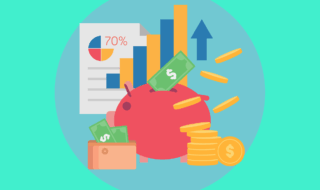In the dynamic realm of e-commerce, the power of mobile push notifications stands undisputed. These instant digital nudges have become critical for engaging today’s ever-connected consumer. As the digital marketplace grows increasingly crowded, the ability to capture and retain consumer attention through these notifications has become paramount. This article aims to unpack the strategic deployment of mobile push notifications in e-commerce, highlighting their capability to transform customer interaction and drive business growth. By understanding the nuances of effective notification strategies, businesses can leverage this tool for communication and as a catalyst for enhanced customer engagement and retention.

Contents
The Impact of Mobile Push Notifications on Customer Engagement
In the arena of e-commerce marketing, mobile push notifications, primarily when powered by platforms like Reteno, play a pivotal role in shaping customer engagement. When thoughtfully crafted and timed, these notifications can revolutionize the interaction between customers and brands, making them a fundamental tool in digital marketing strategies.
Personalization is key. Tailored notifications, based on individual customer preferences and behaviors, ensure relevance and boost engagement. Imagine a customer who frequently browses sports equipment. Sending them a message about a new line of running shoes is more likely to elicit a response than a generic promotion.
Timing is equally crucial. Understanding the best time to reach your audience can make a difference. A notification sent when a customer is most likely online increases the chances of it being noticed and acted upon.
The impact of these notifications is measurable through ‘monthly active users’ – a vital metric in digital marketing. A surge in this number often indicates successful engagement strategies, including effectively used push notifications. This metric reflects the reach of your notifications and their ability to keep users engaged with your app or website.
Furthermore, these notifications can lead to direct action, such as immediate purchases, mainly when they include enticing calls to action like limited-time offers or exclusive discounts. This direct call to a specific action can significantly nudge customers along the sales funnel.
In summary, when personalized and timed right, mobile push notifications can enhance user experience, boost monthly active users, and drive conversions. If you’re a digital marketer, you know how crucial customer engagement is in the e-commerce sector. And, let me tell you, one tool has completely revolutionized the game – its impact is simply profound! Trust me, you would want to use this indispensable tool to take your e-commerce game to the next level.
Best Practices for Implementing Push Notifications in E-commerce
Implementing push notifications in e-commerce requires a strategic approach to ensure effectiveness and maintain user engagement.
- Audience Understanding and Segmentation: It’s crucial to know your audience. Segmenting your users based on their behavior, preferences, and past interactions allows you to tailor notifications that resonate with them. This segmentation can lead to more personalized and effective communication.
- They are crafting the Message: Your notifications should be concise, clear, and action-oriented. They must convey the message quickly and effectively, encouraging the user to take the desired action. Remember, the goal is to add value, not to overwhelm.
- Timing and Frequency: Timing is everything. Sending notifications at a time when users are most likely to engage can significantly increase their effectiveness. Additionally, be mindful of the frequency. Bombarding users with too many notifications can lead to negative experiences.
- Technical Integration and Performance Tracking: Ensure your push notification system seamlessly integrates with your e-commerce platform. Utilize analytics to track the performance of your notifications and make data-driven decisions to optimize them.
- Legal and Ethical Considerations: Respect user privacy and adhere to legal standards. Obtaining explicit consent for sending notifications and ensuring compliance with data protection laws is non-negotiable.
- Testing and Optimization: Continuously test different aspects of your push notifications – from wording and timing to user segments – and optimize based on performance data. This iterative process is critical to refining your strategy and maximizing impact.
Successfully implementing push notifications in e-commerce hinges on deeply understanding your audience, crafting impactful messages, considering timing and frequency, technical integration, legal compliance, and continuous optimization. These practices ensure notifications are seen and acted upon, enhancing the overall user experience and contributing to business growth.
In conclusion, mobile push notifications have emerged as a potent tool in the e-commerce sector, bridging the gap between businesses and consumers in the digital realm. Their ability to personalize, engage, and drive user action is unparalleled. As we’ve explored, the effectiveness of these notifications hinges on a deep understanding of audience needs, crafting clear and engaging messages, timing, and adhering to ethical standards. Businesses embracing these practices will see an uptick in monthly active users and foster a more loyal customer base. The future of e-commerce marketing lies in leveraging such technologies wisely, ensuring a balance between business objectives and customer experience.



